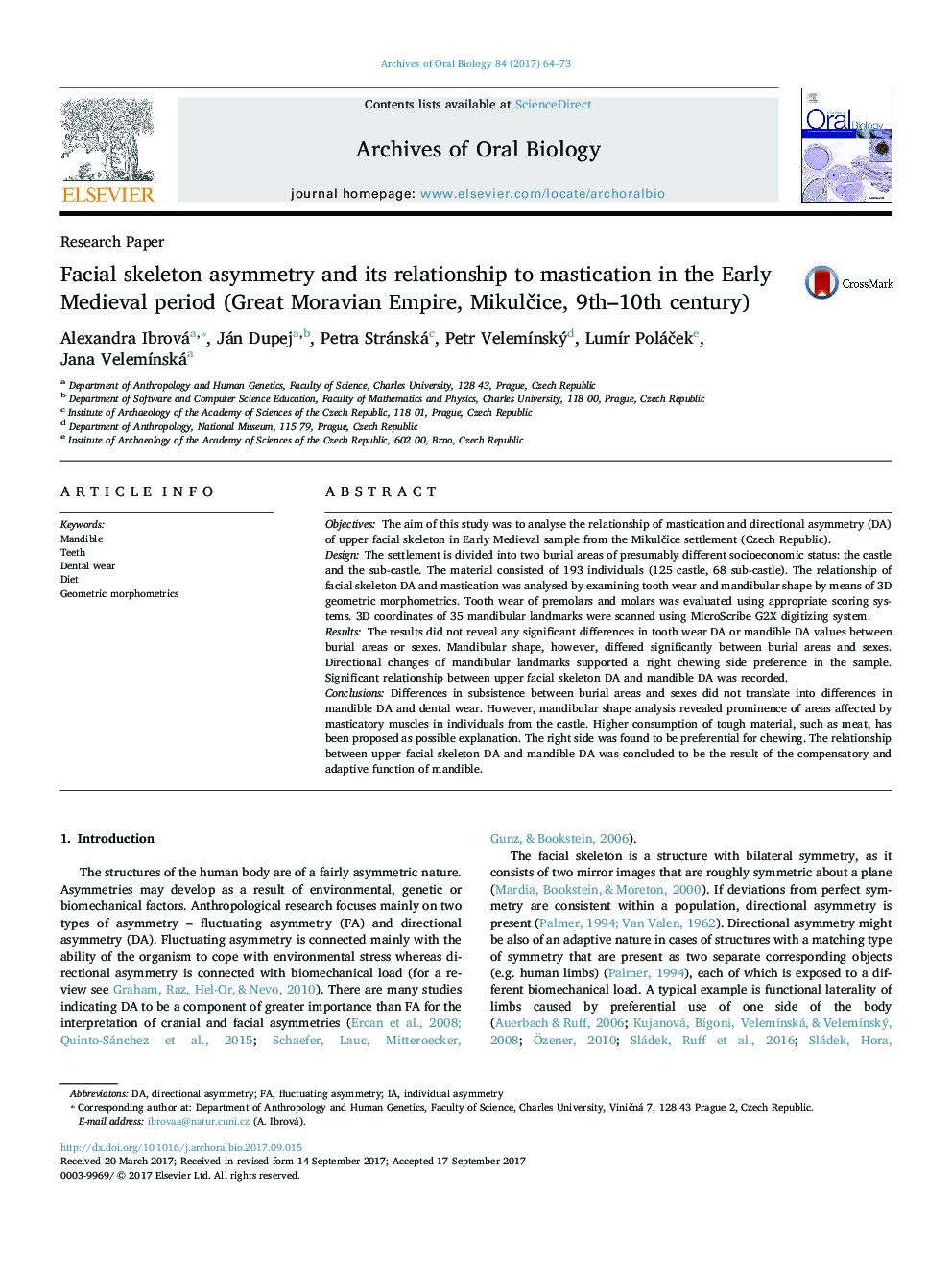| کد مقاله | کد نشریه | سال انتشار | مقاله انگلیسی | نسخه تمام متن |
|---|---|---|---|---|
| 5637934 | 1583269 | 2017 | 10 صفحه PDF | دانلود رایگان |

- The degree of attrition was slightly higher in sub-castle comparing to castle.
- Mandibular shape differed significantly between castle and sub-castle.
- Areas of mandible affected by masticatory muscles were prominent in castle.
- Visualisation of the asymmetry revealed right unilateral chewing side preference.
- Mandibular asymmetry follows asymmetry of upper face showing its adaptive function.
ObjectivesThe aim of this study was to analyse the relationship of mastication and directional asymmetry (DA) of upper facial skeleton in Early Medieval sample from the MikulÄice settlement (Czech Republic).DesignThe settlement is divided into two burial areas of presumably different socioeconomic status: the castle and the sub-castle. The material consisted of 193 individuals (125 castle, 68 sub-castle). The relationship of facial skeleton DA and mastication was analysed by examining tooth wear and mandibular shape by means of 3D geometric morphometrics. Tooth wear of premolars and molars was evaluated using appropriate scoring systems. 3D coordinates of 35 mandibular landmarks were scanned using MicroScribe G2X digitizing system.ResultsThe results did not reveal any significant differences in tooth wear DA or mandible DA values between burial areas or sexes. Mandibular shape, however, differed significantly between burial areas and sexes. Directional changes of mandibular landmarks supported a right chewing side preference in the sample. Significant relationship between upper facial skeleton DA and mandible DA was recorded.ConclusionsDifferences in subsistence between burial areas and sexes did not translate into differences in mandible DA and dental wear. However, mandibular shape analysis revealed prominence of areas affected by masticatory muscles in individuals from the castle. Higher consumption of tough material, such as meat, has been proposed as possible explanation. The right side was found to be preferential for chewing. The relationship between upper facial skeleton DA and mandible DA was concluded to be the result of the compensatory and adaptive function of mandible.
Journal: Archives of Oral Biology - Volume 84, December 2017, Pages 64-73